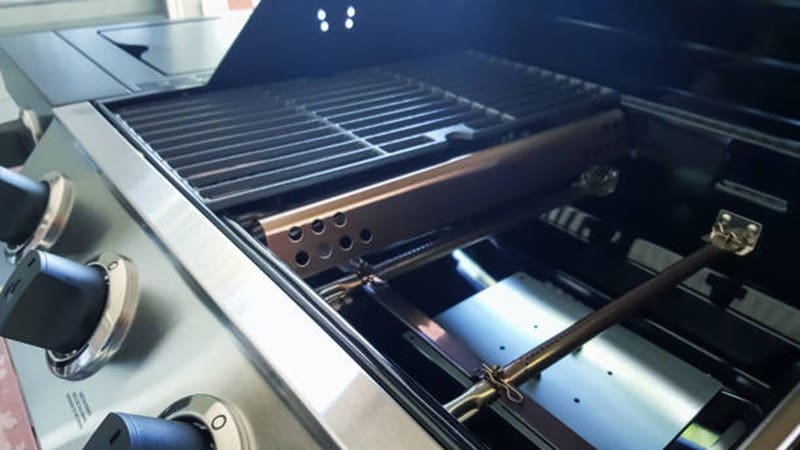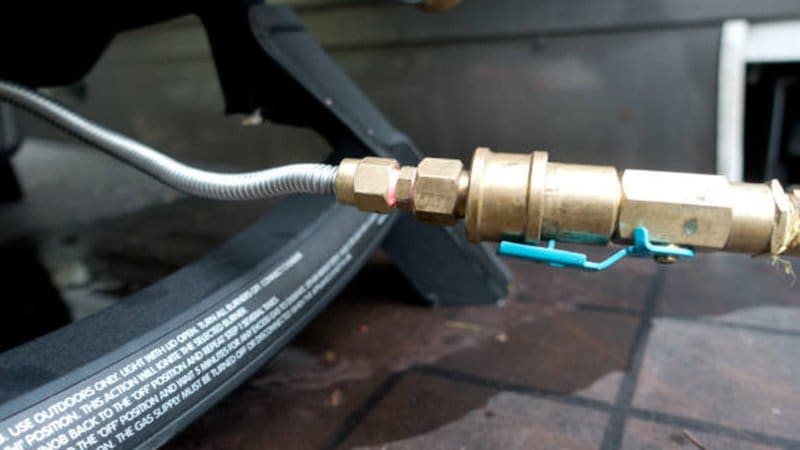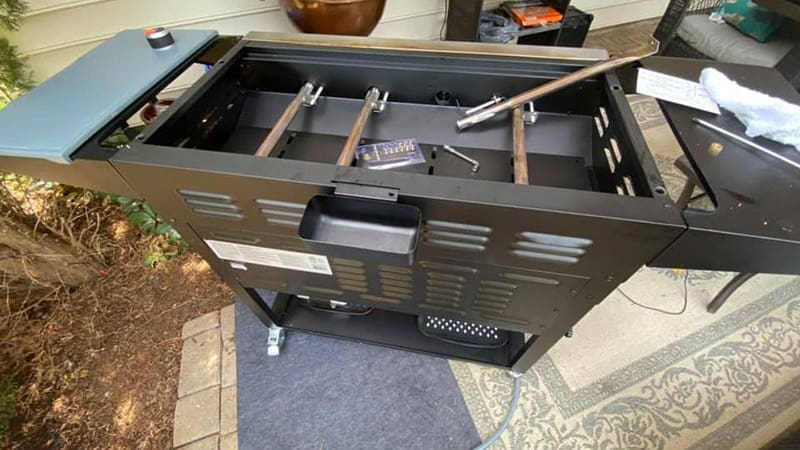
It is quite natural for gas grills to develop some problems after extended use – just like any other mechanical equipment. However, a grill does not necessarily have to be old to be faulty. There are quite a number of signs that a grill could show when it’s not in good shape, and when these signs are noticed, the solution is not to abandon it and shop for a new one. Rather you should try out some troubleshooting tricks that could return the grill to perfect working order. In this article, we will break down the commonest gas grill problems you can encounter and the steps you can take to fix them.
Safety First
Before you take any troubleshooting steps, you want to make sure that you’ve taken the required safety precaution. The most important precaution when dealing with gas grills is to turn off the tank valve and disconnect the grill from the fuel source. Also, it is recommended that you let the grill cool down completely if you’ve had it on shortly before. In addition to letting the grill cool down, waiting for some minutes after you’ve put off the grill allows the gas to dissipate totally.
A Guide to Troubleshooting Your Gas Grill
1. Low Flame from Burners
This is one of the most likely issues you’ll face with your gas grill. The low flame from burners can almost always be traced to the fuel line regulator. Over time, the fuel line regulator tends to get sticky and when this happens, it limits the flow of gas, reduces the flame intensity, and affects the buildup of temperature in the grill. Interestingly, troubleshooting this problem is quite straightforward, and all you’re required to do is release the pressure that’s on the regulator.
- Ensure that you turn off the gas supply at the propane tank and disconnect the gas hose and regulator from the tank
- Open the lid of the grill
- Open all the control knobs to high and leave for 1 – 2 minutes to let all the gas in the manifold escape
- Turn all the control knobs off
- Reattach the gas hose and regulator to the tank
- Slowly turn the knob controlling the gas supply from the tank to allow the line to re-pressurize
- Ignite the grill
- It should burn and heat normally by now
2. Gas Grill Doesn’t Light

Modern gas grills feature igniters that light up the burner, so you don’t have to do it manually. When you discover that your gas grill doesn’t light, try to light it manually. If it lights up, then you know the problem is with the ignition system. There are different types of ignition systems used in gas grills. The most popular are:
- Piezo
- Flame Thrower Valve
- Battery Powered
- Electrically Driven Ignition
If your gas grill has independent igniters on all the burners, and none of the burners lights up, then it’s likely due to faulty wiring or a bad button. On the other hand, if you have independent igniters and only one of the burners doesn’t light up, then there’s a problem with that single igniter.
To troubleshoot the igniter, take off the cooking grate and pull off the barrier to get to the igniter. Push the ignition button and look out for small sparks and audible clicks. Clean the igniter if it is clogged. If it isn’t clogged, there could be faulty wiring or a faulty switch.
3. Orange/Yellow Flame

When you discover that your gas grill is giving out yellow/orange flames, the flow of the fuel may not be continuous or there may not be a balanced mixture of air and gas. Here’s what you can do in a situation like this.
- Look for the venturi tube adjustment screw. It should be located at the end of the burner, by the metal shutter. The screw controls the opening and closing of the shutters.
- Ignite the grill and out the flame on a very low setting
- Adjust the screw till you get a blue or mostly blue
- As soon as you have a satisfactory blue flame, turn off the burner and tighten the adjustment screw.
Furthermore, a yellow or orange flame may also be caused by the wrong type of gas. For example, a grill designed for natural gas can give out yellow/orange flame when you try to use propane.
4. Uneven Heating
The most probable cause for uneven heating is a blocked burner or a damages burner part. Burners come with holes through which gas is emitted to burning flames. Over time, some of the holes can get clogged by drippings or other dirt. All you need to do is clear whatever material is clogging the burner with a wire brush.
However, if that doesn’t get rid of all the dirt, you may have to remove the burner from the grill for a more thorough cleaning. Thankfully many grills have burners you can easily lift out, although some are bolted in place and harder to remove. Remove the burner from the grill and clean thoroughly with a stiff wire brush, ensuring that you get rid of whatever dirt is clogging the holes.
5. Flame From the Control Panel
The flame from behind the control panel is usually caused by a blockage or misalignment of the venturi tubes. After the grill has cooled down, inspect the connection and for any misaligned or loose parts. Check the tubes and hoses for cracks or burn-throughs.
Gas Grill Parts
Tank
The propane tank holds the fuel the burns to produce heat in the grill. The tank is usually one of the most durable parts of a gas grill set up and you’re very unlikely to get a damaged or faulty gas tank.
Fuel Hose and Regulator
The volume of fuel that would come out of the tank into the grill is naturally more than you would need to burn for the grilling process. The regulator regulates the flow of fuel into the grill and it is attached to the tank with a hose and an O-ring. Regulators have vent holes that could get clogged and lead to irregular fuel flow.
Control Valves
Control valves regulate fuel flow to the burner. Every burner on a gas grill will come with a control valve. When a control valve starts to malfunction, replacing the whole control valve is usually the best thing to do.
Venturi Tubes
Venturi tubes in gas grills link burner to control valve, with the added function of mixing fuel with air. Because of the opening in the fuel line, foreign objects can easily get in and block the line. Also, it is common for venturi tubes to be misaligned with burners.
Burners
This is the part where the combustion takes place to produce heat in a gas grill. Burners can get clogged and corrode easily. A burner that’s overly corroded should be replaced. Nevertheless, a decent burner should remain functional for about three years at the very least.
Conclusion
You can’t write off malfunctions when it comes to gas grills. Just like any other mechanical equipment can develop faults at any point in time. Not everyone is handy enough or skilled enough to make extensive repairs on gas grills. However, most gas grill issues you would face will only need simple remedies you would be able to administer.
For expert assistance with mechanical repairs beyond your grill, discover Rolon’s mobile truck repair services, ensuring you’re always ready for any situation.
With the right troubleshooting trick, you’ll be able to get your gas grill working properly in no time. Hempen Hill BBQ has covered most of the issues you could face with your gas grills and tricks you can try out to fix the issues.

